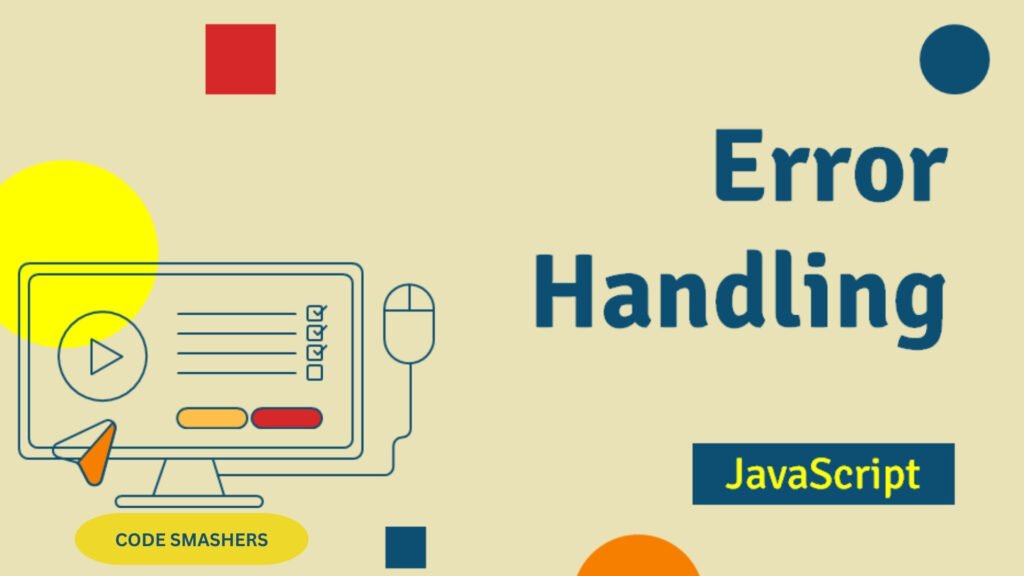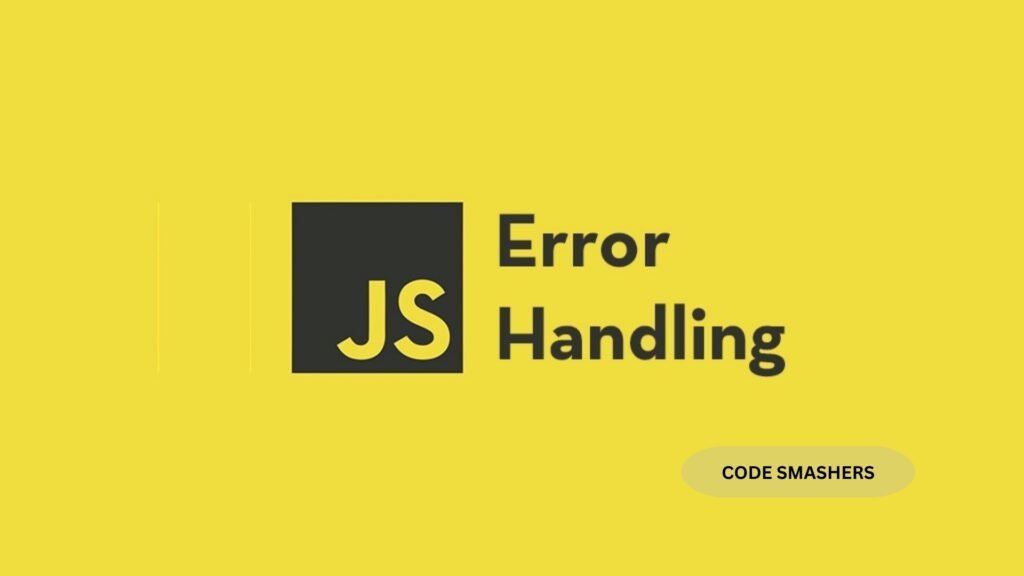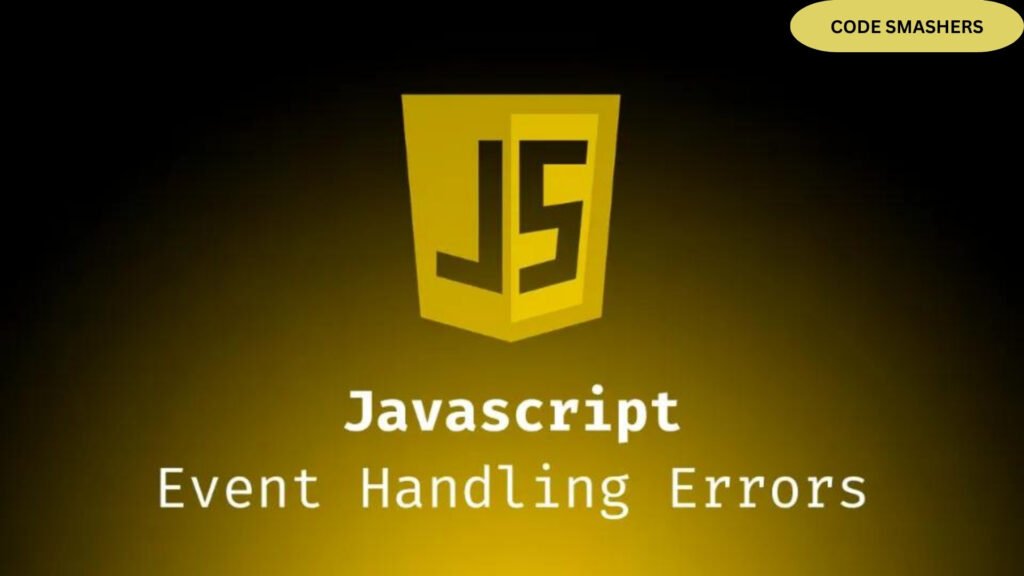JS Javascript is the backbone of modern web development, enabling dynamic interactions and responsive user experiences. Yet, even the best-written code can encounter errors. Effective error handling and debugging are crucial for any JS Javascript developer, ensuring smooth and functional applications. This thorough tutorial will go over several methods for managing and debugging JS Javascript issues like pros.
Introduction to JS Javascript Error Handling
Errors in JS Javascript are inevitable, whether due to syntax mistakes, runtime issues, or logic flaws. Proper error handling ensures your application remains robust and user-friendly, even when things go wrong.

Importance of Error Handling in JS Javascript
Error handling in JS Javascript is essential for maintaining application stability and providing a seamless user experience. By anticipating potential errors and managing them effectively, developers can prevent crashes and ensure smooth operation.
Common Types of Errors
Three kinds typically comprise JS Javascript errors:
- Syntax Errors: Mistakes in the code that prevent the script from running.
- Runtime Errors: Errors that occur while the script is executing.
- Logical Errors: logical errors that lead to inaccurate conclusions.
Using `try…catch` for Error Handling
One of the most common methods for error handling in JS Javascript is the `try…catch` statement. This structure allows developers to catch errors and handle them gracefully.
Basic Syntax and Structure
The basic structure of a `try…catch` block involves wrapping the code that might throw an error within a `try` block. If an error occurs, the `catch` block executes, allowing for error handling.
Example:
try {
// Code that may throw an error
} catch (error) {
// Handle the error
}
Catching Different Types of Errors
The `catch` block can be utilized to address various issues by examining the characteristics of the error object. This approach allows customized error handling based on the error type.
The Role of the `finally` Block
The `finally` block is used with `try…catch` to ensure that certain code executes regardless of whether an error occurred.
When and How to Use `finally`
The `finally` block is perfect for cleanup tasks like resource release or file closure because it runs after the `try` and `catch` blocks.
Example:
try {
// Code that may throw an error
} catch (error) {
// Handle the error
} finally {
// Code that runs regardless of an error
}
Use Cases and Examples
The `finally` block is particularly useful for tasks that must run no matter what, such as logging operations or resetting variables.

Throwing Custom Errors with `throw`
JS Javascript allows developers to create and throw custom errors using the `throw` statement.
Syntax for Throwing Errors
Use the ‘throw` expression with an error object or any other data type to throw an error.
Example:
throw new Error(‘Something went wrong’);
Creating Custom Error Messages
Custom error messages provide more context and clarity, helping developers understand what went wrong and where.
Understanding Error Objects
JS Javascript’s built-in `Error` object provides useful information about errors.
Properties of the `Error` Object
Properties that provide information about the issue, such as “name,” “message,” and “stack,” are included in the `issue` object.
Extending the `Error` Object for Custom Errors
You can extend the `Error` object to create custom error types, providing more specific error handling capabilities.
Error Propagation and Handling
Errors in JS Javascript can propagate through functions, potentially causing issues if not properly managed.
How Errors Propagate Through Functions
A `try…catch` block catches an error that is thrown inside a function by moving it up the call stack.
Techniques for Managing Error Propagation
To manage error propagation, use `try…catch` blocks at strategic points in your code and consider using promises or async/await for asynchronous operations.
Debugging Techniques: Introduction
Effective debugging is critical for identifying and resolving issues in your code.
Overview of Common Debugging Methods
Breakpoints, console logs, and browser-provided debugging tools are common debugging techniques.
Importance of Effective Debugging
Effective debugging saves time, reduces frustration, and ensures your code runs smoothly.
Using Breakpoints for Debugging
Breakpoints are a powerful tool for pausing code execution and inspecting its state.
Setting and Removing Breakpoints
You can set breakpoints in your code using browser developer tools, allowing you to pause execution at specific points.

Advanced Breakpoint Features (e.g., Conditional Breakpoints)
Advanced features like conditional breakpoints pause execution only when certain conditions are met, aiding in more precise debugging.
Console Methods for Debugging
The console is an invaluable tool for debugging JS Javascript code.
Using `console.log`, `console.error`, and `console.warn`
These methods allow you to log information, errors, and warnings to the console, helping track down issues.
Advanced Console Methods: `console.table` and `console.group`
Methods like `console.table` and `console.group` offer additional ways to organize and display debugging information.
Inspecting Variables and Call Stacks
Inspecting variables and call stacks helps understand the current state and flow of your code.
Viewing Variable Values in Debugging Tools
Browser developer tools allow you to inspect variable values and watch expressions during code execution.
Analyzing Call Stacks for Function Calls
Call stacks provide a trace of function calls, helping identify where errors occur.
Handling Errors in Asynchronous Code
Error handling is presented with new hurdles by asynchronous programs.
Error Handling with Callbacks
Callbacks require explicit error handling, often using the error-first callback pattern.
Error Handling in Promises and Await
Promises and async/await simplify asynchronous error handling with more readable and maintainable code structures.
Debugging Asynchronous Code
Debugging asynchronous code can be tricky but is essential for robust applications.
Techniques for Debugging Asynchronous Operations
Techniques include promises, async/await, and tools like asynchronous breakpoints.
Using Tools and Libraries for Async Debugging
Libraries like Bluebird and async/await debugging tools in browsers help simplify the process.
Error Handling in Event-Driven Code
Event-driven code can also encounter errors that need handling.

Managing Errors in Event Handlers
Use try-catch blocks in event handlers to manage errors gracefully.
Using Event Listeners for Error Tracking
Event listeners can track and log errors, providing insights into issues as they occur.
Best Practices for Error Handling
Following best practices ensures effective and maintainable error handling.
Strategies for Robust Error Handling
Strategies include using centralized error handling functions and logging errors for future analysis.
Common Mistakes to Avoid
Avoid common mistakes like swallowing errors or failing to provide meaningful error messages.
Debugging in Different Environments
Different environments require tailored debugging approaches.
Debugging in Browsers vs. Node.js
Browser debugging tools differ from those in Node.js, necessitating different techniques and tools.
Environment-Specific Debugging Tools
Familiarize yourself with environment-specific tools like Chrome DevTools and Node.js debugger.
Automated Testing and Error Detection
Automated testing helps detect errors early and ensures code quality.
- Using Testing Frameworks for Error Detection
Frameworks like Jest and Mocha automate error detection in unit tests.
- Integrating Error Handling in Test Cases
Integrate error handling in test cases to simulate and manage real-world scenarios.
- Error Reporting and Monitoring
Error reporting tools help track and analyze errors in production.
- Setting Up Error Reporting Tools
Tools like Sentry and Rollbar provide real-time error monitoring and reporting.
- Analyzing Error Reports for Insights
Analyzing error reports helps identify patterns and prioritize fixes.
Performance Considerations in Error Handling
Error handling can impact application performance.
- Impact of Error Handling on Performance
Excessive error handling can slow down applications, so balance is key.
- Optimizing Error Handling for Efficiency
Reduce the number of try-catch sections in performance-critical code routes to maximize error handling.
The Importance of Continuous Learning
Continuous learning is crucial in the ever-evolving field of software development, where new technologies and methodologies emerge rapidly. By engaging in lifelong learning, developers can keep their skills relevant and tackle complex problems with innovative solutions. Continuous learning fosters adaptability, allowing professionals to transition smoothly between different programming languages, frameworks, and tools as needed.
Furthermore, it promotes personal growth and professional advancement, as staying updated with industry trends increases employability and opens up new career opportunities. Engaging in continuous learning also encourages a culture of curiosity and innovation within teams, leading to higher-quality software and more agile development processes.
Case Studies: Real-World Debugging Scenarios
Real-world examples provide valuable insights into debugging practices.
- Examples of Debugging Common Issues
Case studies highlight common issues and effective debugging strategies.
- Lessons Learned from Real-World Cases
To become more proficient at debugging and error-handling, learn from your past mistakes.
Future Trends in JS Javascript Debugging and Error Handling
Stay ahead of the curve by exploring emerging trends in debugging and error handling.
- Emerging Tools and Techniques
New tools and techniques continue to evolve, offering improved capabilities.
- Predictions for the Evolution of Debugging Practices
Anticipate future developments to remain at the forefront of JS Javascript development.
Conclusion
Gaining proficiency in JS Javascript error handling and debugging is necessary to create dependable and durable apps. By understanding and implementing these techniques, you can ensure smoother user experiences and maintainable codebases. Whether you’re a beginner or an experienced developer, these strategies provide valuable insights to enhance your programming skills. Remember, the key to effective error handling and debugging lies in continuous learning and adaptation.
Happy Coding!
